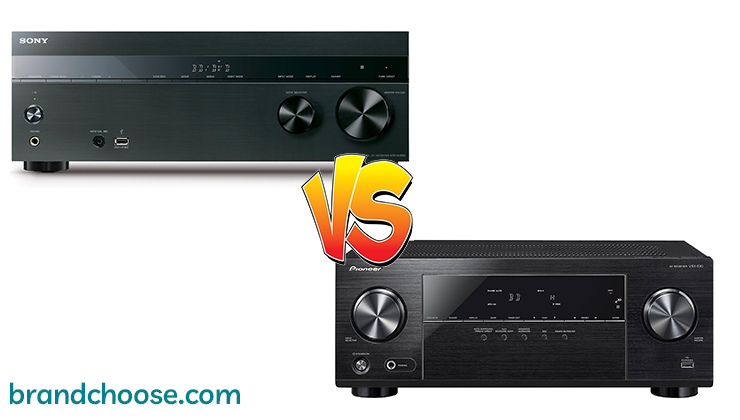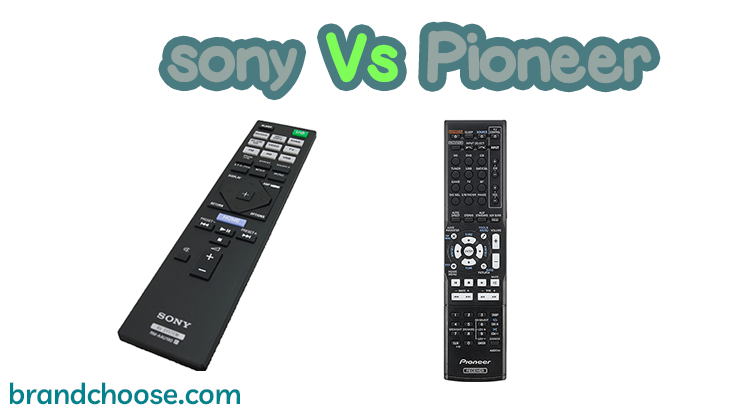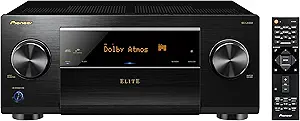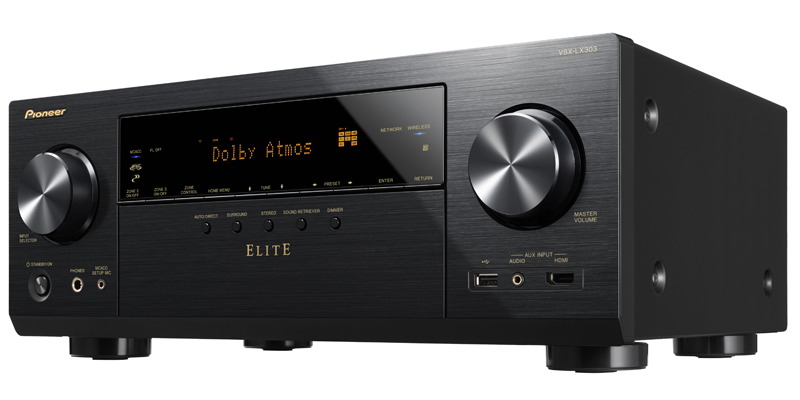The Pioneer AV receiver and Sony AV receiver are two prominent brands in the audio/video receiver category. Pioneer AV receivers are known for their advanced technology, such as the Direct Energy HD Amplifier, which offers a high signal-to-noise ratio and low distortion. This technology ensures that the sound quality is clear and precise, even at high volumes. The Pioneer AV receivers also come with MCACC Pro room calibration, which optimizes sound to suit the specific acoustics of the room. On the downside, some users have reported the user interface to be less intuitive compared to other brands. On the other hand, Sony AV receivers are equipped with the latest Dolby Atmos technology, providing a three-dimensional sound experience. They also come with DSEE HX technology that upscales compressed digital music files, enhancing the sound quality of your music. Sony AV receivers are also compatible with 4K HDR and Dolby Vision, offering high-quality video performance. However, a common criticism of Sony AV receivers is their lack of Auro-3D support, a feature that is available in many other brands.
Product Selection
Pioneer and Sony AV receivers are both reputable brands in the audio equipment category, each offering a wide range of products to suit various user needs. Pioneer AV receivers, such as the VSX-534, are known for their Direct Energy Design and 150 W/ch (6 ohms, 1 kHz, THD 10 %, 1ch Driven) that ensures high-quality audio performance. They also feature the latest technologies, including Dolby Atmos and DTS:X playback, and support pass-through for HDR10, HLG (Hybrid Log-Gamma), and Dolby Vision signals. On the other hand, Sony AV receivers, like the STR-DN1080, also offer a broad selection with features like 7.2 Ch x 100W into 6 ohms, Dolby Atmos and DTS:X support, and 4K HDR/Dolby Vision compatibility. While both brands offer a variety of options, there are some differences in their product selections. Pioneer AV receivers tend to focus more on delivering high-quality audio performance, with technologies like Direct Energy Design and MCACC auto room tuning. Sony, however, offers more diverse features like flexible speaker solutions, Phantom Surround Back, and Digital Cinema Auto Calibration EX with speaker relocation technology. Therefore, the choice between Pioneer and Sony would largely depend on the specific needs and preferences of the user.
Availability
Pioneer and Sony AV receivers are both widely available in the market, both in physical stores and online platforms. Pioneer, known for its AV receivers like the Pioneer VSX-534, offers the latest technologies such as Dolby Atmos, DTS:X, and built-in Bluetooth wireless technology. These receivers are easily available on major e-commerce websites like Amazon, Best Buy, and the company's official website. However, Pioneer's availability can sometimes be limited in certain regions or countries, which can be a drawback for some potential buyers. On the other hand, Sony AV receivers, such as the Sony STR-DH790, are also readily available and come with advanced features like 4K HDR, Dolby Vision compatibility, and flexible surround capability. They are sold in numerous electronic stores worldwide and are also available on various online platforms like Amazon, Best Buy, and Sony's official website. Sony's global presence and distribution network make its AV receivers more widely available across different regions compared to Pioneer. Therefore, in terms of availability, Sony AV receivers have a slight edge over Pioneer AV receivers.
Design/Look
The Pioneer AV receiver and Sony AV receiver both have distinctive design features that cater to different user preferences. The Pioneer AV receiver is known for its sleek and modern look, often featuring a brushed metal finish and a minimalist front panel. The display is clear and easy to read, with a logical layout of buttons and dials. The latest models, like the Pioneer VSX-934, have also integrated advanced technologies such as Dolby Atmos and DTS:X playback, offering an immersive audio experience. However, some users have noted that the Pioneer's design is more utilitarian than stylish, which may not appeal to those looking for a more aesthetic centerpiece for their home theater setup. On the other hand, the Sony AV receiver, particularly models like the Sony STR-DN1080, boasts a more sophisticated and polished design. It features a glossy black finish and a neatly organized front panel, which many users find more visually appealing. The display is vibrant and intuitive, making it easy for users to navigate through various settings and options. The Sony AV receiver also incorporates cutting-edge technologies such as 4K HDR pass-through and Dolby Atmos, offering high-quality sound and visuals. However, the glossy finish is prone to fingerprints and dust, requiring more frequent cleaning. Compared to Pioneer, Sony's design leans more towards elegance and style, making it a more attractive option for users who prioritize aesthetics.

Price
When comparing the price points of Pioneer and Sony AV receivers, it is observed that the Pioneer AV receivers are generally more affordable than their Sony counterparts. Pioneer's latest models, such as the Pioneer VSX-534 5.2-Channel AV Receiver, come with advanced features like Dolby Atmos, DTS:X, and 4K HDR pass-through, yet are priced reasonably, making them an excellent choice for budget-conscious consumers. On the other hand, Sony's AV receivers, such as the Sony STR-DN1080 7.2-Channel AV Receiver, are priced higher. However, they offer superior technologies like Dolby Atmos 3D and DTS:X object-based surround sound, 4K HDR/Dolby Vision compatibility, and built-in Chromecast for seamless streaming. While Pioneer offers a more budget-friendly option, Sony's higher price point can be justified by its advanced features and technologies. For instance, Sony's AV receivers come with the latest audio format support and superior sound quality, which can enhance the overall home theater experience. However, it's important to note that the price difference between Pioneer and Sony AV receivers may vary based on the specific model and the features it offers. Therefore, when comparing these brands, consumers should consider their specific needs and budget constraints.
Quality/Durability
The Pioneer AV receiver and Sony AV receiver both offer high-quality sound and durability, but they each have their unique strengths and weaknesses. Pioneer AV receivers, such as the VSX-534, are known for their Direct Energy Design and 150 W/ch (6 ohms, 1 kHz, THD 10 %, 1ch Driven) which provide high-quality audio output. They also feature the latest technologies like Dolby Atmos and DTS:X playback, making them a popular choice for home theater systems. However, some users have reported issues with the longevity of the HDMI ports, which may affect the overall durability of the receiver. On the other hand, Sony AV receivers, like the STR-DH790, are renowned for their exceptional build quality and durability. They incorporate the latest technologies such as Dolby Atmos and DTS:X just like Pioneer, but they also offer 4K HDR pass-through and 145 W/ch (6 ohms, 1 kHz, 1ch Driven) which gives a slight edge over Pioneer in terms of video quality. Sony receivers are generally considered more user-friendly with an intuitive setup process, but they are often criticized for their lack of advanced customization options. In terms of durability, Sony receivers have a solid reputation, but there have been isolated reports of overheating issues. Overall, both brands offer reliable and durable receivers, but individual preference will depend on specific needs and requirements.
Reputation
Pioneer and Sony are both highly reputable brands in the audio/video receiver market, each with its own strengths and unique offerings. Pioneer, a brand that has been in existence since 1938, is known for its innovative technologies and high-quality products. Their AV receivers are well-regarded for their excellent sound quality, advanced features like Dolby Atmos and DTS:X support, and user-friendly interfaces. Pioneer's latest models, such as the VSX-LX504 and VSX-LX304, are equipped with the latest technologies like 4K Ultra HD pass-through, HDCP 2.3 support, and advanced room correction software. However, Pioneer receivers are often criticized for their higher price tags and complex setup process. Sony, on the other hand, is a globally recognized brand that has a strong reputation for delivering reliable and high-performing products. Their AV receivers, such as the STR-DN1080 and STR-DH790, offer excellent value for money, providing a good balance of performance, features, and affordability. Sony receivers are known for their easy setup, user-friendly interface, and support for the latest audio formats including Dolby Atmos and DTS:X. They also feature 4K HDR pass-through and HDCP 2.3 support. However, some users have noted that Sony's sound quality, while good, may not match up to the exceptional audio performance offered by Pioneer receivers.
Warranty
Pioneer and Sony, both are well-established brands in the audio receiver market, however, they differ when it comes to warranty services. Pioneer AV receivers come with a 1-year warranty on parts and labor. This warranty is limited and only covers defects in materials and workmanship. It does not cover issues caused by misuse, modifications, or repairs not performed by Pioneer authorized service centers. On the other hand, Sony AV receivers offer a more extended warranty period. Sony provides a 2-year warranty on parts and a 1-year warranty on labor for its AV receivers. This extended warranty period is a significant advantage for Sony users as it provides a longer protection period against manufacturing defects. In terms of customer service, Pioneer has been reported to have a more responsive and efficient customer service compared to Sony. Pioneer has a reputation for resolving warranty claims quickly and efficiently. Sony, on the other hand, has been criticized for its slow response time and complicated warranty claim process. However, it is important to note that experiences with customer service can vary greatly depending on the region and the specific issue at hand. In comparison to other brands in the market, both Pioneer and Sony offer competitive warranty periods. Brands like Yamaha and Denon also offer similar warranty periods ranging from 1 to 2 years.
Easy To Use
The Pioneer AV receiver is renowned for its user-friendly interface, making it a popular choice among consumers. It features a clean and intuitive on-screen display, with a well-organized menu system that allows users to easily navigate through various settings and options. The latest models, such as the Pioneer VSX-934, come with a remote control that has a simplified layout and clearly labeled buttons. Additionally, Pioneer has incorporated advanced technologies like Apple AirPlay 2, DTS Play-Fi, and built-in Chromecast, which make streaming music and controlling your home theater system a breeze. On the other hand, Sony AV receivers are also designed with ease of use in mind. Sony's user interface is straightforward and easy to understand, with a quick setup guide to help users get started. The Sony STR-DN1080, for instance, comes with a remote control that features a dedicated button for each input and sound field, reducing the need for users to navigate through complex menus. Moreover, Sony's receivers also support a wide range of wireless technologies, including Bluetooth, Wi-Fi, and Google Chromecast, providing users with various options for streaming audio. However, some users have reported that Sony's menu system can be a bit complex and overwhelming, especially for those who are not familiar with AV receivers. Both brands are highly regarded in the AV receiver market, but when it comes to ease of use, the choice between Pioneer and Sony may come down to personal preference.

Conclusion
When it comes to the aspect of audio and video quality, both Pioneer and Sony AV receivers have their strengths. Pioneer AV receivers often come equipped with the latest technologies like Dolby Atmos and DTS:X for immersive sound experience. They also have MCACC automatic room calibration which optimizes sound for your specific room, making it a strong competitor in the market. However, some users have reported that the user interface is not as intuitive as it could be, which may be a downside for those who are not tech-savvy. On the other hand, Sony AV receivers are known for their exceptional video quality, supporting 4K HDR pass-through and Dolby Vision. They also feature Sony's unique Digital Cinema Auto Calibration system, which adjusts the sound to your room's acoustics, and the Phantom Surround Back technology that creates a 7-channel surround effect with only a 5-channel speaker setup. However, some users have reported that Sony receivers may lack the punch in the bass department compared to other brands. In comparison to Pioneer, Sony AV receivers may offer a more user-friendly interface, but might fall slightly short in delivering the depth of sound.



















